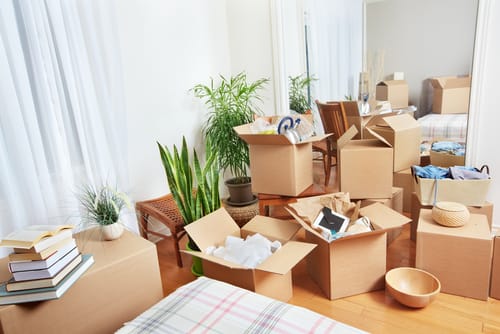
1. Pack with plenty of time to spare

Whether you run out of boxes, have a family emergency or simply feel too worn out to pack, it’s inevitable that getting organised for your move will take longer than you originally anticipated. To avoid any disruption on the day of the move, give yourself plenty of time to pack, so everything is boxed up and good to go when the removal van arrives.
2. Enlist the help of experts

Although it’s tempting to take the DIY approach to removals, it’s best to get expert help by booking a removals team who will help you to pack, load the van, safely transport your possessions and unload them at the other end. Removals teams are experienced at protecting fragile items, lifting awkward furniture and moving heavy boxes, so their expertise will significantly reduce the risk of any moving day mishaps.
3. Communicate with your removals team

Once your removals team is booked, you’ll need to come up with a plan of attack. Make sure you communicate your needs to the removal company, including timings for the day, any assistance you need with packing, and potential challenges such as tricky access and narrow doorways. Warn them well in advance if you have large, awkward items to move such as a piano or solid wood table, and be accurate about the amount of boxes you have so they bring enough staff and a large enough van.
It’s also important to consider if there are any parking restrictions at your current or new house, so that the removals company can park while packing or unpacking takes place. If you live on a busy street where lots of cars are parked, it’s worth speaking to neighbours to see if they can move their cars on the planned move dates. This will ensure there’s more space near your front door, minimising lifting distance for you and the removals team, and making the moving process much quicker.
4. Measure furniture and bulky items

If you don’t measure your furniture and bulky items before you move, you run the risk of problems when your super-sized sofa doesn’t fit through your new front door, or your dining table doesn’t fit into your kitchen. To avoid any problems at the other end, get hold of the floorplans for your new home and be realistic about what will and won’t fit. Make sure you measure up properly before you move in, and if a piece of furniture is too big or awkward to fit into your new home, discuss the best way to get it into your new home with your removals company. They will know the best tricks of the trade. However, if you can’t get the furniture in, simply sell it online, give it to a family member or donate it to charity.
But if you own bulky furniture that you know want to keep, discuss the best way to get it into your new home, such as removing windows and doors to create more space. This will likely be an additional cost that the removal company will charge.


